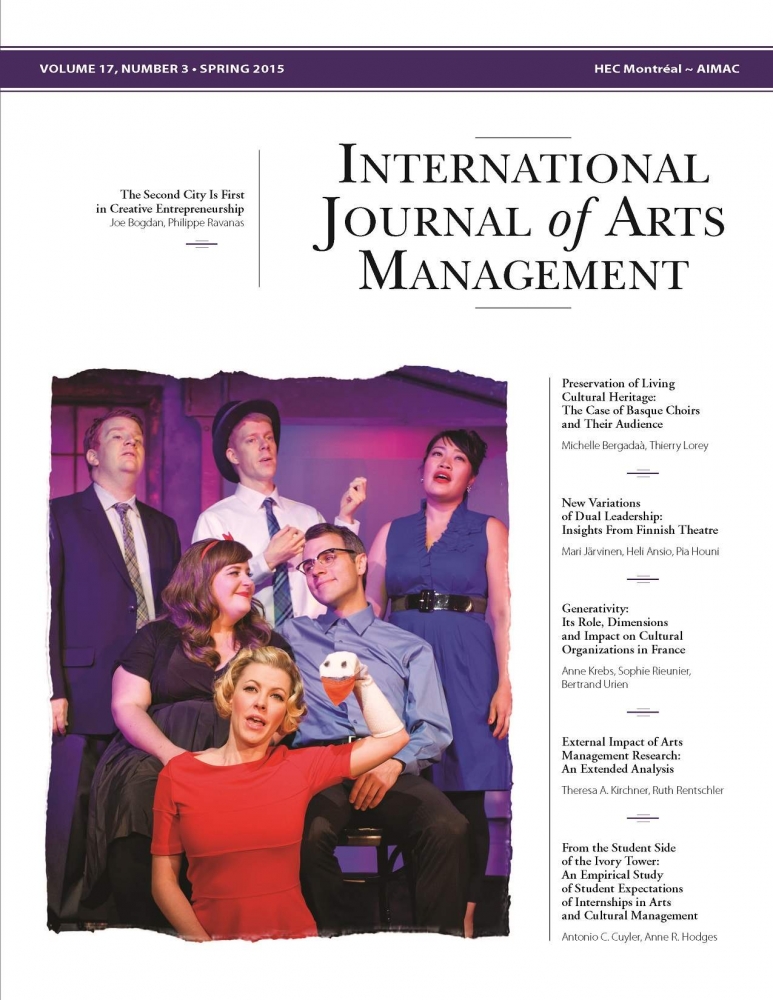IJAM Volume 17 Number 3 (PDF)
Product: Journal
$53.00 CA
EDITOR’S NOTE
Dear readers,
Let me start this editorial note by expressing my appreciation for the work done by Johanne Turbide as Editor of IJAM since 2010. I’d like to especially acknowledge her commitment, dynamism and rigour, which have given great impetus to the Journal.
This Spring 2015 issue provides an inspiring view of the research being conducted in arts marketing and management. The first article describes a qualitative in-depth analysis of Basque amateur choirs and their community-based character. The authors, Michelle Bergadaá and Thierry Lorey, suggest original marketing strategies for organizations wishing to protect their cultural heritage.
The second contribution brings a new variation on the dual leadership model, based on the experience of six Finnish theatres. Mari Järvinen, Heli Ansio and Pia Houni analyze data from interviews with 12 leaders who chose each other as partners in order to lead their organization together, both artistically and administratively. The authors reflect on how this new model may help bridge boundaries within organizations.
The next article explores the increase in charitable bequest-based funding in the arts sector. Anne Krebs, Sophie Rieunier and Bertrand Urien examine how an individual’s generative disposition can have an impact on bequests to a cultural institution. They base their analysis on the results of a quantitative study of the motivations of 486 donors to the Louvre museum in Paris.
Theresa A. Kirchner and Ruth Rentschler are the authors of the fourth contribution in this issue, on the external impact of seven arts management and marketing journals, including the International Journal of Arts Management, on mainstream journals between 1987 and 2010. Their findings reveal the maturation of arts management literature and the cross-fertilization between arts management and mainstream literature.
The fifth article, by Antonio C. Cuyler and Anne R. Hodges, presents the results of a quantitative study of the expectations of 206 arts management students with respect to their internships. In a nutshell, the results show how students value internships, how they impact their careers and how they should be carried out, providing valuable insights both for the arts organizations in which the internships take place and for faculty members.
Finally, the Company Profile features The Second City, a classic sketch comedy troupe based in Chicago. Joe Bogdan and Philippe Ravanas draw a parallel between the artistic creativity and the entrepreneurial creativity of this American cultural institution.
François Colbert
Editor
